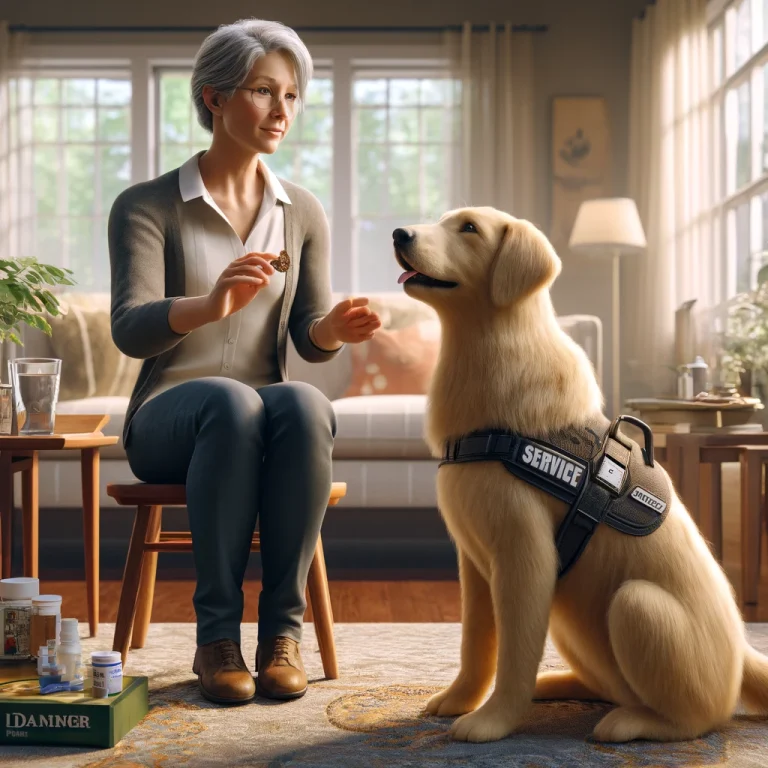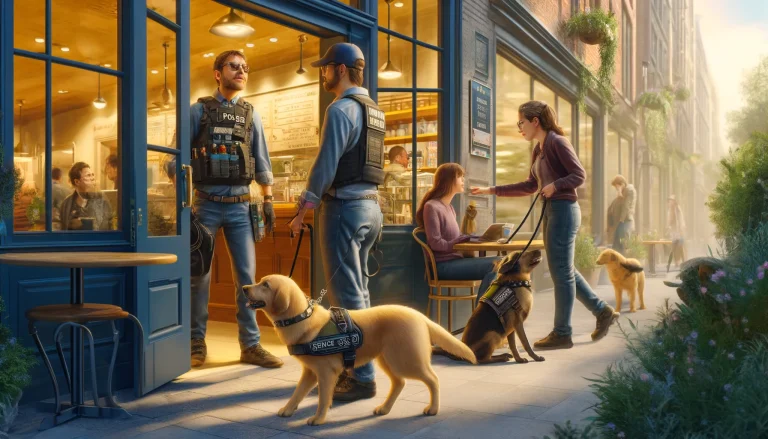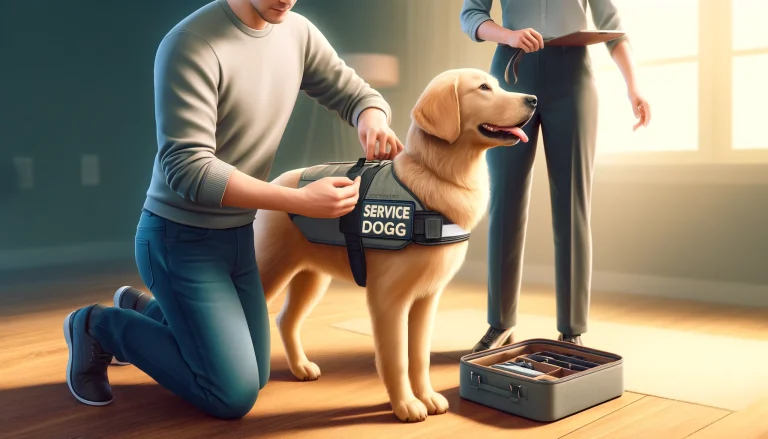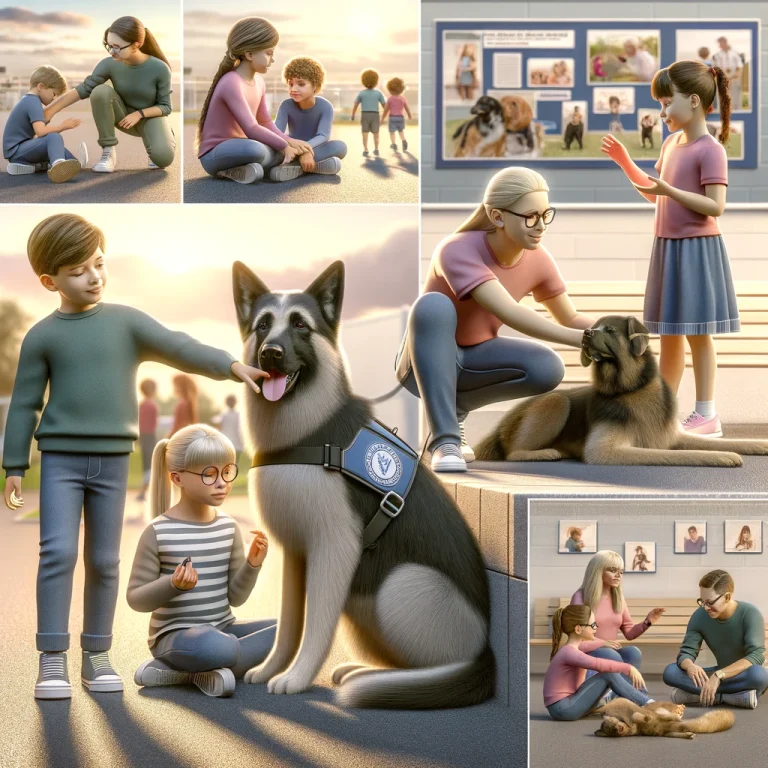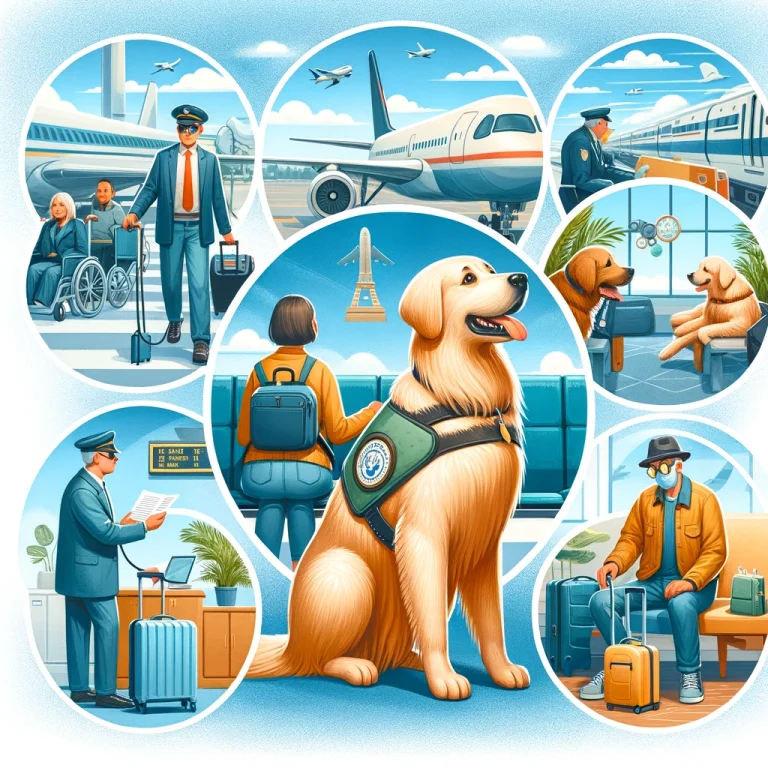Service dogs communicate much more than we often realize. Understanding their behavior is not just about reinforcing training; it’s about deepening the bond between you and your canine partner. In this blog, we delve into the art of decoding service dog behavior and what they’re trying to tell you.
1. Tail Wagging: More Than Just Happiness
Contrary to popular belief, tail wagging doesn’t always mean a dog is happy. The way a dog wags its tail can indicate various emotions. A slow wag might show uncertainty, while a more vigorous wag could signify excitement or happiness. Observing the direction and speed can provide insights into your service dog’s emotional state.
2. Eye Contact: A Window to Their Thoughts
Service dogs use eye contact to communicate trust and attention. A dog that maintains eye contact might be showing they’re focused and ready to assist. However, averting eyes could signify discomfort or distraction. Learning to read these subtle cues can significantly improve your interaction.
3. Vocalizations: Barks and Whines
Barking and whining can mean several things, depending on the context. A high-pitched bark often indicates excitement, whereas a low-pitched bark could be a warning. Whining might mean the dog is anxious or needs something. Paying attention to these sounds, in conjunction with the situation, can help you understand their needs better.
4. Body Posture: Deciphering Their Stance
A service dog’s body posture can reveal a lot. A relaxed stance with a wagging tail shows contentment, while a rigid body might indicate alertness to a potential issue. If your dog cowers or tucks its tail, it could be feeling fearful or stressed.
5. Yawning and Licking Lips: Signs of Stress
Yawning and licking lips in dogs can be signs of stress or discomfort. If your service dog displays these behaviors in specific situations, it may require further training or reassurance in those settings.
Conclusion:
Understanding your service dog’s behavior is crucial for a harmonious relationship. By learning to decode their signals, you can respond more effectively to their needs and emotions, enhancing the bond and effectiveness of your partnership.
Interactive Poll:
“🐕🦺 What aspect of your service dog’s behavior do you find most intriguing or challenging to understand? Share your experiences and let’s learn together!
Vote for the number and let’s discuss ways to improve our understanding of these behaviors! Your insights can help other service dog handlers too! 🐾🤔
For assistance with self-training a Service Dog, Click Here

